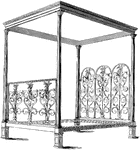
Normal Aperture Front Wide High Vowel
Vowels have a wide, firm, and free channel, whereby the breath is modified without friction or sibilation.…

Normal Aperture Front Primary Wide Vowel
Vowels have a wide, firm, and free channel, whereby the breath is modified without friction or sibilation.…
Normal Aperture Front Wide Low Vowel
Vowels have a wide, firm, and free channel, whereby the breath is modified without friction or sibilation.…

Round Back Primary High Vowel
Vowels have a wide, firm, and free channel, whereby the breath is modified without friction or sibilation.…
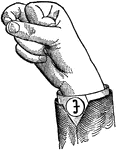
Round Back Primary Mid Vowel
Vowels have a wide, firm, and free channel, whereby the breath is modified without friction or sibilation.…

Round Back Primary Low Vowel
Vowels have a wide, firm, and free channel, whereby the breath is modified without friction or sibilation.…

Round Back Wide High Vowel
Vowels have a wide, firm, and free channel, whereby the breath is modified without friction or sibilation.…

Round Back Wide Mid Vowel
Vowels have a wide, firm, and free channel, whereby the breath is modified without friction or sibilation.…

Round Back Wide Low Vowel
Vowels have a wide, firm, and free channel, whereby the breath is modified without friction or sibilation.…
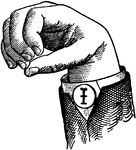
Round Mixed Primary High Vowel
Vowels have a wide, firm, and free channel, whereby the breath is modified without friction or sibilation.…
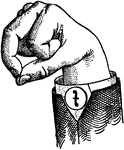
Round Mixed Primary Mid Vowel
Vowels have a wide, firm, and free channel, whereby the breath is modified without friction or sibilation.…
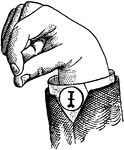
Round Mixed Primary Low Vowel
Vowels have a wide, firm, and free channel, whereby the breath is modified without friction or sibilation.…
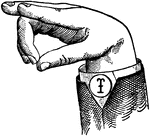
Round Mixed Wide High Vowel
Vowels have a wide, firm, and free channel, whereby the breath is modified without friction or sibilation.…
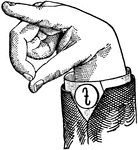
Round Mixed Wide Mid Vowel
Vowels have a wide, firm, and free channel, whereby the breath is modified without friction or sibilation.…
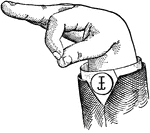
Round Mixed Wide Low Vowel
Vowels have a wide, firm, and free channel, whereby the breath is modified without friction or sibilation.…

Round Front Primary High Vowel
Vowels have a wide, firm, and free channel, whereby the breath is modified without friction or sibilation.…

Round Front Primary Mid Vowel
Vowels have a wide, firm, and free channel, whereby the breath is modified without friction or sibilation.…

Round Front Primary Low Vowel
Vowels have a wide, firm, and free channel, whereby the breath is modified without friction or sibilation.…

Round Front Wide High Vowel
Vowels have a wide, firm, and free channel, whereby the breath is modified without friction or sibilation.…

Round Front Wide Mid Vowel
Vowels have a wide, firm, and free channel, whereby the breath is modified without friction or sibilation.…
Round Front Wide Low Vowel
Vowels have a wide, firm, and free channel, whereby the breath is modified without friction or sibilation.…
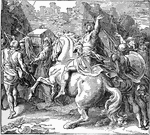
Falling of the Walls of Jericho
"And it came to pass on the seventh day, that they rose early at the dawning of the day, and compassed…
Chess Grass
The Chess Grass (Bromus secalinus), also called Willard's Bromus, has a spreading, slightly drooping…

Chess Grass
The Chess Grass (Bromus secalinus), also called Willard's Bromus, has a spreading, slightly drooping…
Chess Grass
The Chess Grass (Bromus secalinus), also called Willard's Bromus, has a spreading, slightly drooping…

Meadow Oat Grass
Meadow Oat Grass (Avena pratensis) is a perennial grass that grows to a height of about eighteen inches.…

Meadow Oat Grass
Meadow Oat Grass (Avena pratensis) is a perennial grass that grows to a height of about eighteen inches.…
Wheat
St. Peter's corn (Triticum monococcum) is a one-seeded wheat with a high portein content. This picture…
Timothy Grass
Timothy Grass is commonly grown for cattle feed and, in particular, as hay for horses. It is relatively…
Timothy Grass
Timothy Grass is commonly grown for cattle feed and, in particular, as hay for horses. It is relatively…
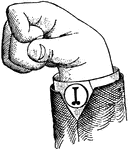
Normal Aperture Mixed Primary Low Vowel
Vowels have a wide, firm, and free channel, whereby the breath is modified without friction or sibilation.…
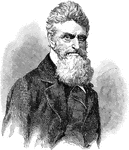
John Brown
John Brown (1800 – 1859) was an American abolitionist who advocated and practiced armed insurrection…

Robinson's House in Battle of Bull Run
The Robinson House belonged to a free African American during the First Battle of Bull Run. The house…
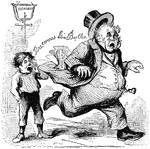
Nast's First Caricature - John Bull
In January of 1863, Harper's Weekly published Nast's first caricature cartoon - a boy frightening John…

Black Friday in Wall Street
"What a fall there was, my countrymen!" This picture from Nast depicts the wreck in Wall Street after…
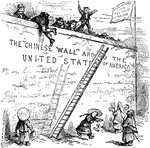
Chinese Wall Hypocrisy in the United States
A picture depicting hypocrisy of advocates of the "Chinese Wall" around the United States with the old…

Paradoxides Harlani
Paradoxides was a genus of relatively large trilobites, extinct marine arthropods, that form the class…
Vorticella
The Bell Animalcule (Vorticella) (fig 10) in certain respects resembles the Slipper Animalcule. It is…
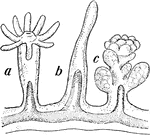
Hydroid Jellyfish
Hydroids, related to the jellyfish, have three basic life-cycle stages: a tiny free-swimming planula…
Flatworm
Flatworms are flattened, leaf-like forms living in damp places on land, in freshwater streams of ponds,…
Flatworm
Flatworms are flattened, leaf-like forms living in damp places on land, in freshwater streams of ponds,…

Flatworm
Flatworms are flattened, leaf-like forms living in damp places on land, in freshwater streams of ponds,…
Flatworm
Flatworms are flattened, leaf-like forms living in damp places on land, in freshwater streams of ponds,…
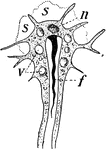
Flatworm
Flatworms are flattened, leaf-like forms living in damp places on land, in freshwater streams of ponds,…

Sense of Sight
In animals there are different types of sight. Some have what we call simple eyes. The simplest eyes…
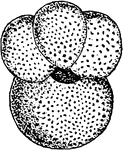
Globigerina
"Globigerina bulloides. GLOBIGERINIDAE. A family of chiefly pelagic foraminiferous rhizopods, with the…
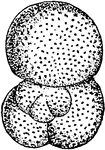
Globigerina
"Globigerina bulloides. GLOBIGERINIDAE. A family of chiefly pelagic foraminiferous rhizopods, with the…
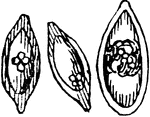
Gregarina
"Gregarina, free pseudo-navicellae. GREGARINIDAE. A family or other major group of endoplastic protozoans,…

Amoebiform Gregarina
"Gregarina, their free amoebiform contents. GREGARINIDAE. A family or other major group of endoplastic…

Gyroscope
"Gyroscope. Gyroscopic top, an instrument consisting of a heavy fly-wheel revolving about an axis one…

Ornate Oval Frame
This is a portrait-oriented frame featuring British coats of arms, scrollwork and symbols of art. The…
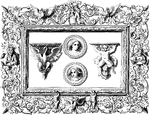
Carton Pierre Frame
The Carton Pierre frame is French for paper-mache. The brackets and medallions are enclosed in the frame.

Light Park Phaeton
The light park phaeton is an early 19th century carriage that is drawn by one or two horses. It is constructed…
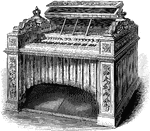
Harmonium
The harmonium is a free standing keyboard instrument, similar to a reed organ or a pipe organ.
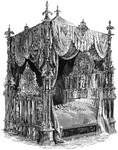
Bedstead
This bedstead is made out of locust wood. It is decorated with a series of statuettes and bas-relief.

Console Table with Bracket
This console table with bracket is framed with foliage. The bracket is also designed with foliage and…



